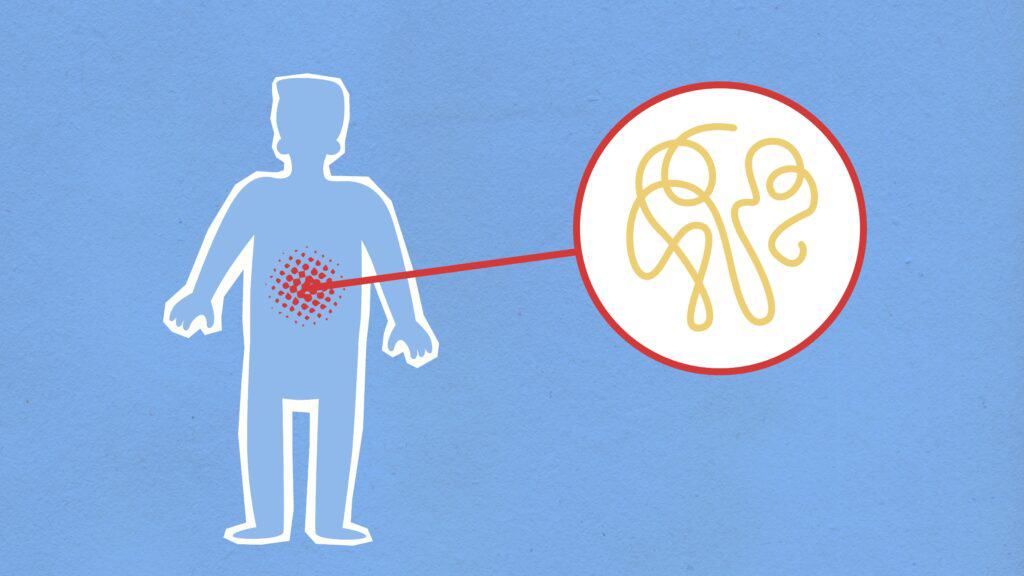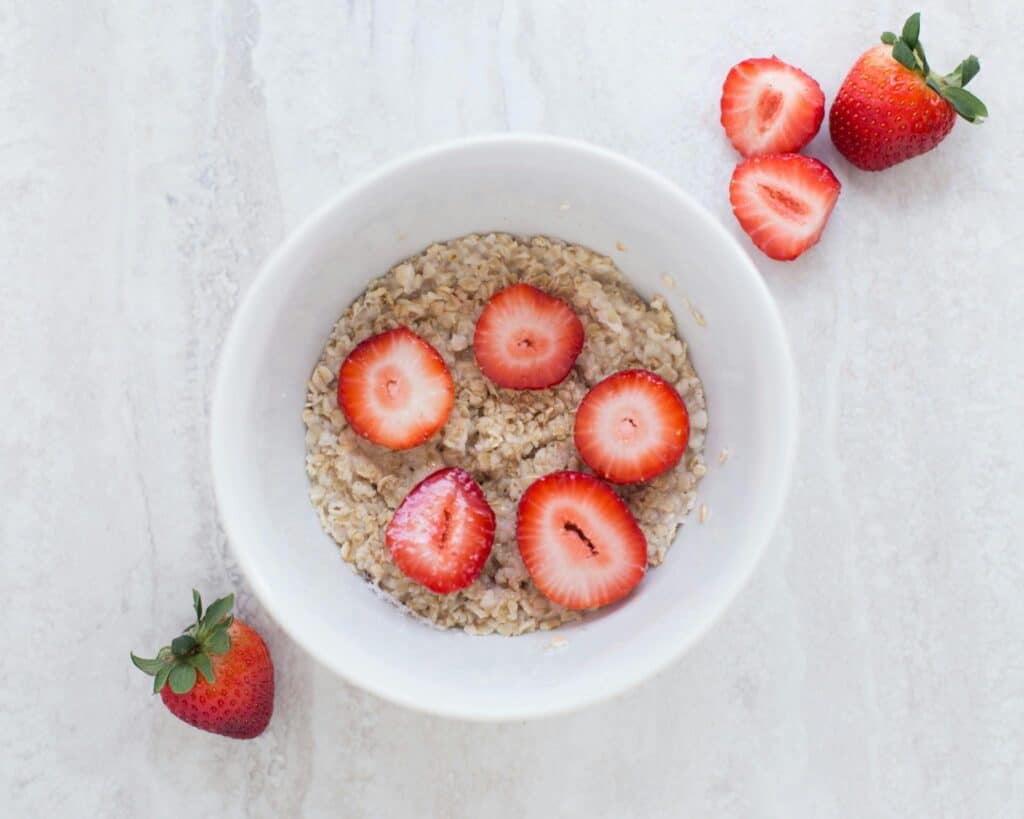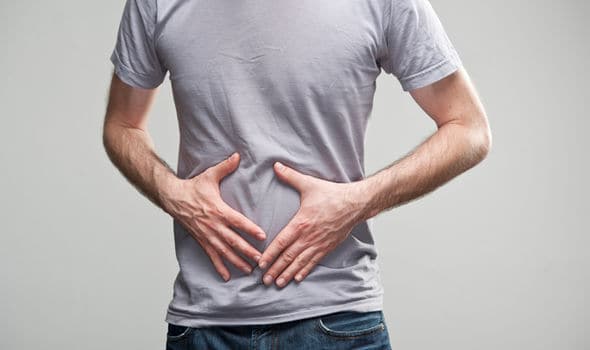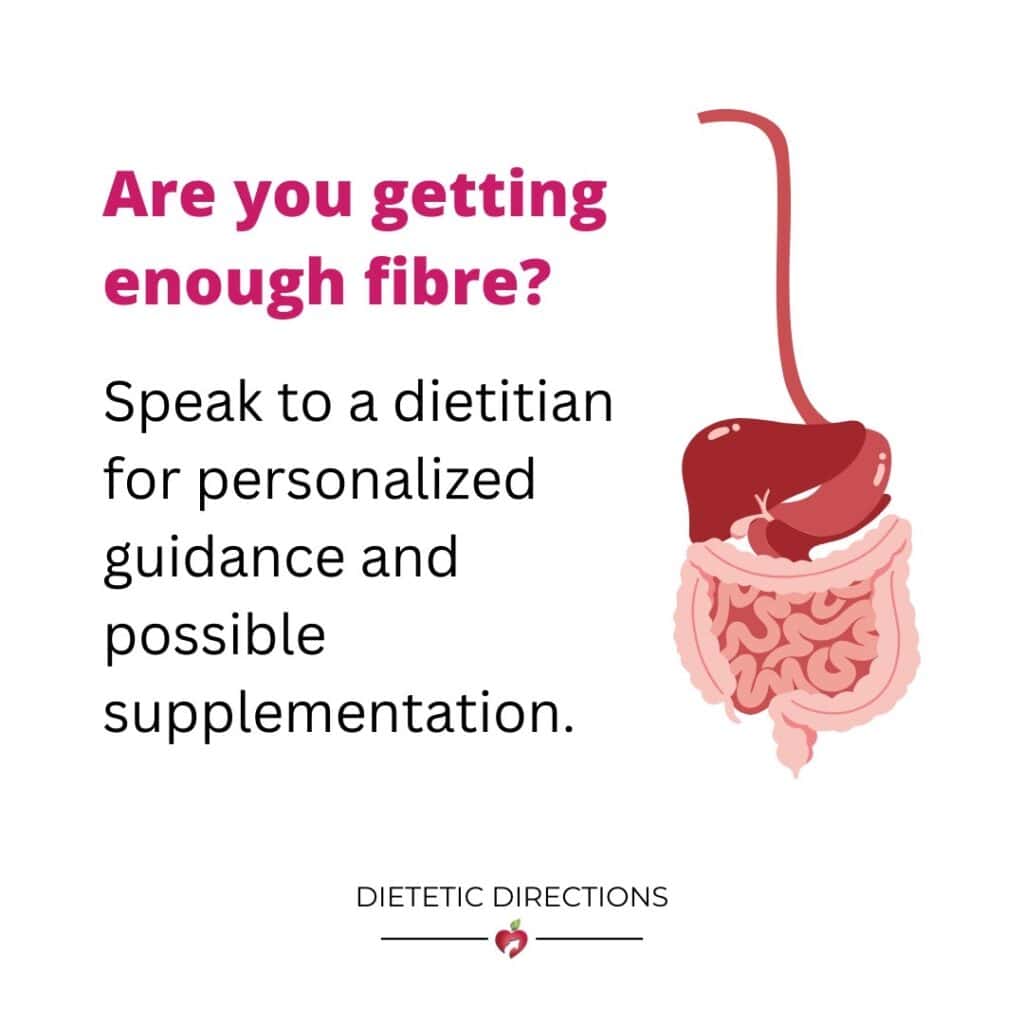
High Fiber Foods Chart for Constipation
A High Fiber Foods Chart for Constipation is a key resource for many struggling with this all-too-common challenge. Therefore, your Registered Dietitians at Dietetic Directions have you covered. Nevertheless, fiber-boosting in general is a healthy practice since most are simply not getting enough. Today, we’ll review bowel regularity facts and a High Fiber Foods Chart for Constipation, along with nutrition tips to get things moving. So take a seat and get comfortable with some reading material!

Read on for how high fiber foods help constipation and which are top sources!
How Common is Constipation?
Constipation is defined as less than three movements weekly or often having hard, lumpy and/or difficult-to-pass stools. Ongoing (aka chronic) constipation affects 15-30% of Canadians and is especially common among young children and elderly. Interestingly, constipation tends to be more common in females than males. The good news is that nutrition often helps!
What is “Normal” Bowel Movement Frequency?
It’s normal to have a bowel movement (BM) anywhere from three times a day to three times a week, as long as stool is soft and comfortable to pass.
What Causes Constipation?
If you’re struggling to have soft, regular BMs, it could be for a number of reasons including:
- Medication side effects. For example, some antidepressants, codeine, narcotics or iron supplements can cause constipation.
- Irritable Bowel Syndrome, in which constipation is a common symptom. Read more about How to Beat the Bloat with FODMAPs.
- Certain health conditions that cause functional changes to organs or tissues in the body such as: Diabetes, stroke, Parkinson’s disease, Inflammatory Bowel Disease, celiac disease, colon cancer or hypothyroidism.
- And of course, dietary and lifestyle factors, such as consuming a low fiber diet, low fluid intake, insufficient physical activity and chronic use of laxatives, suppositories, or enemas.
Constipation can be caused by many factors: medication, heath conditions along with dietary lifestyle.
How High Fiber Foods Help Constipation
Fiber promotes regularity since it increases stool weight and size, making them easier to pass. Additionally, fiber speeds up the transit time, which means that waste moves out more quickly.
Fiber helps to ease constipation by speeding up transit time.
Interestingly, those struggling with diarrhea or alternations from constipation to loose BMs can still benefit from fiber-boosting. However, those with loose BMs, may need a gentler type, namely soluble fiber, which works by absorbing water to form a gel-like substance to add bulk and solidity. Soluble fiber can be in the form of oats, psyllium husks, bananas or oranges.
Oats make for a great source of soluble fiber!
On the other hand, insoluble fiber which is found in foods like bran, beans and pears, acts like a brush, sweeping through the bowels to help move things along. Keep in mind that many foods are a combination of both soluble and insoluble fiber. However, the scope of this blog is not on soluble versus insoluble fiber, but instead on sharing a High Fiber Foods Chart to help with constipation. More on that below!
What are Health Benefits of High Fiber Foods?
Before we jump into the High Fiber Foods Chart for Constipation, let’s first highlight that fiber-boosting is an overall health-promoting strategy. Here are some of the many benefits:
- Helps with lowering cholesterol.
- Improves gut microbiome or healthy gut bacteria diversity.
- Improves digestion by promoting regularity for those with constipation.
- Lowers long-term weight gain and supports weight management.
- Helps to regulate blood sugars.
- Helps with symptoms such as diarrhea and loose bowels.
- Reduces risk of diverticular disease.
- Decreases the risk of colon cancer.
- Increases feeling of fullness after meals, which leads to better weight management.
Looking for fiber-boosting support? Our Dietitian Team will guide with individualized strategies to meet your needs.
How Much Fiber Do We Need?
Dietary requirements for fiber vary based on age and gender. However, many having trouble with constipation may need more than recommended the dietary fiber requirement or may have to use other aids to promote regularity.
Here’s the Dietary Reference Requirements (DRIs) for children and adults:
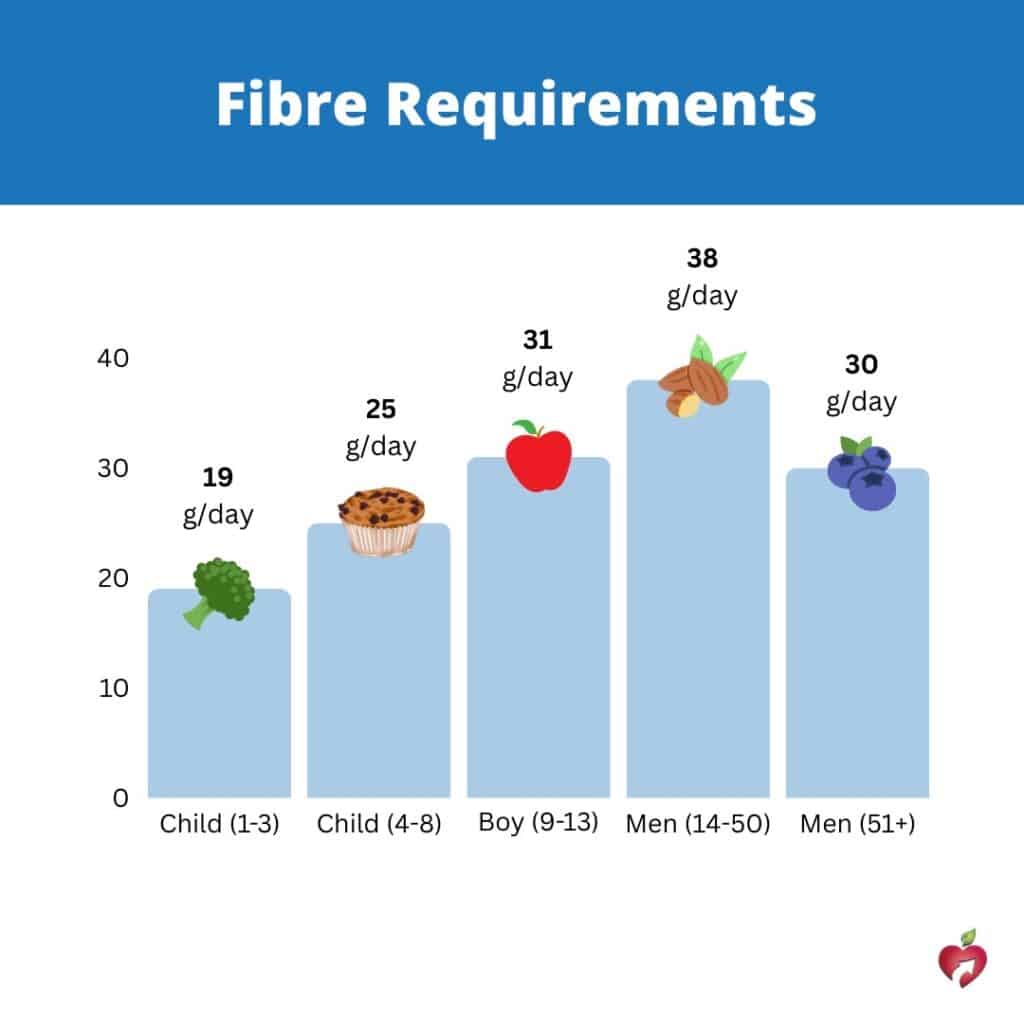
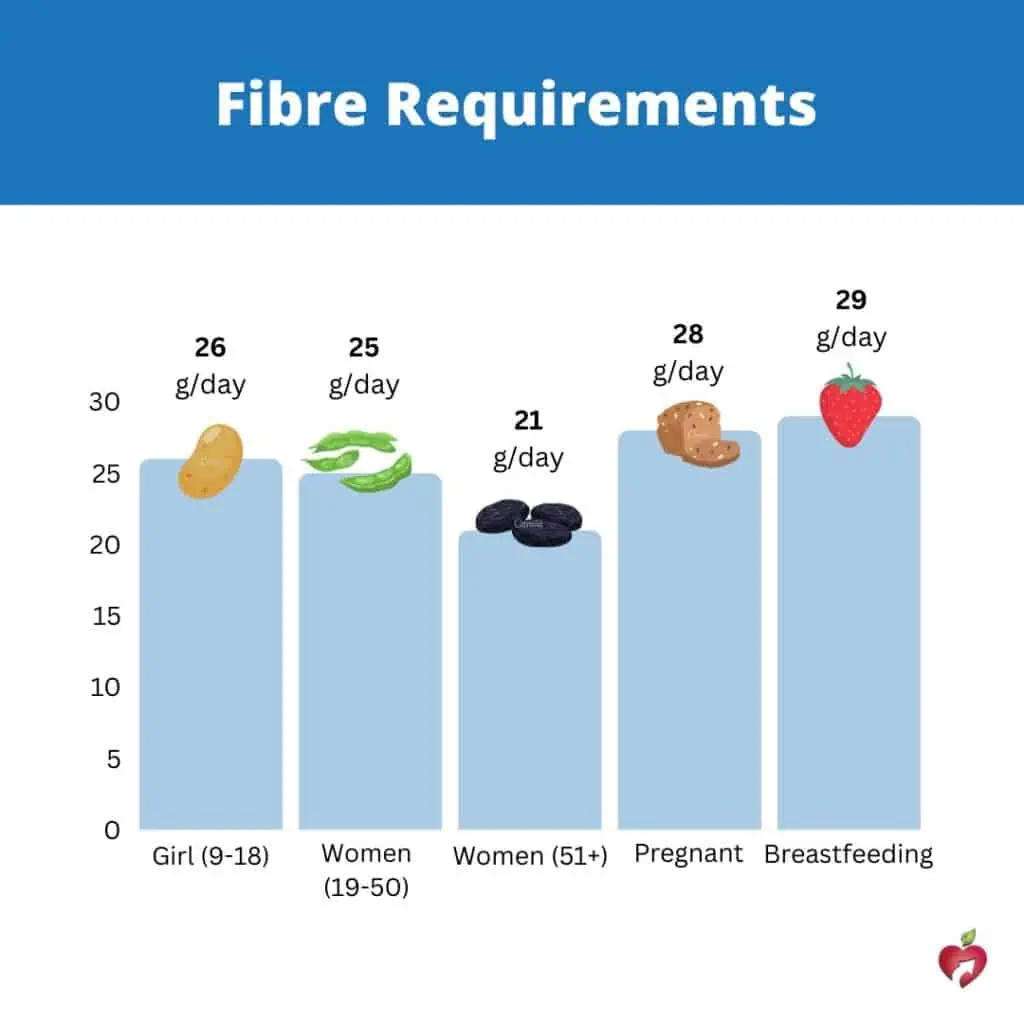
Fun Fact: Most Canadians receive less than half of the daily fiber requirement, consuming around 12 to 18 grams daily.
High Fiber Foods Chart for Constipation
| Food | Serving | Fiber (grams) |
| All Bran Original | 1/2 cup | 14 g |
| Farro, cooked | 1 cup | 12 g |
| All Bran Buds | 1/3 cup | 11 g |
| Bulgur wheat, cooked | 1 cup | 8 g |
| Sprouted grain bread | 2 slices | 8 g |
| Barley, cooked | 1 cup | 6 g |
| Quinoa | 1 cup | 5 g |
| Whole grain pasta | 1 cup | 5 g |
| Oatmeal | 1 cup | 4 g |
| Prunes, dried | 1/4 cup | 3 g |
| Popcorn | 3 cups | 3.5 g |
| Avocado | ½, medium | 7 g |
| Broccoli or Cauliflower, cooked | 1 cup | 5 g |
| Brussel Sprouts, cooked | 1 cup | 4 g |
| Raspberries | 1 cup | 8 g |
| Pear | 1 medium | 6 g |
| Blueberries | 1 cup | 6 g |
| Orange | 1, medium | 3 g |
| Sweet potato with skin | 1, medium | 4 g |
| Potato with skin | 1, medium | 2 g |
| Navy beans, chickpeas, cooked | 1/2 cup | 10 – 12 g |
| Green peas, cooked | 1 cup | 9 g |
| Edamame, shelled | 1 cup | 8 g |
| Lentils, black beans, cooked | 1/2 cup | 8 g |
| Chia seeds | 1 tbsp | 4 g |
| Flax seeds, ground | 1 tbsp | 2 g |
| Soy nuts, roasted | 1/4 cup | 4 g |
| Pistachios, Pumpkin seeds | 1/4 cup | 3 g |
Dietitian’s Fiber- Boosting Tips
Now you are aware of the importance of dietary fiber, along with how much you need. Plus, you are equipped with a High Fiber Foods Chart for Constipation, so you are ready for some dietitian-approved tips to boost your intake.
Here are some of Dietitian Andrea’s Suggestions:


Need More Fiber-Boosting Tips?
- Replace white starches with whole grain versions.
- Fill up half your plate with vegetables.
- Eat your veggie peels (if they are safe to eat), since most of the fiber is often found there.
- Try using avocado instead of mayonnaise or cheese on a sandwich.
- Sprinkle nuts or seeds on your salad.
- Try a vegetarian meal with beans or lentils instead of meat.
- Opt for whole fruits/vegetables instead of juice.
- Add fresh, frozen, or dried fruit to yogurt, cereal, and oatmeal.
- Snack on veggies dipped in hummus or guacamole, air-popped popcorn, and fresh fruit.
What If Fiber-Boosting Doesn’t Help Constipation?
It is imperative to speak to your doctor or Registered Dietitian about concerns with bowel regularity and note how long this has been occurring and to what extent. Constipation or fluctuations in bowel regularity could be a symptom of an underlying health condition that needs addressed first.
For example, some fiber-foods could make your symptoms worse depending on your reason for constipation. For example, for many with Irritable Bowel Syndrome (IBS), eating foods rich in fiber like brans or beans, which are also high in fructans and/or galacto-oligosaccharides (GOS), a small, hard-to-digest sugar, can make symptoms of constipation worse. Read more about FODMAP diet and how it can help beat the bloat.
Low FODMAP diet is scientifically proven diet to help in relieving symptoms of IBS.
Additionally, those with celiac disease, may have constipation as a symptom and require a completely gluten-free diet. Therefore, seeking gluten-containing high-fiber foods (like brans) would not be recommended and likely will not improve constipation. Speaking to your medical or health professional is key.
Other Strategies for Constipation?
1. Adequate Hydration:
Ensure you are consuming at least 8 to 10 cups of fluid per day. When increasing dietary fiber, it is also crucial to increase your water to help the fiber work its way through your digestive system.
2. Exercise Regularly:
Physical activity helps move food through the colon more quickly. Aerobic activity such as cycling, brisk walking, and swimming can increase your heart rate and stimulate natural intestinal contractions. Health Canada suggests aiming for at least 2.5 hours or 150 minutes of physical activity per week.
Discover some of the benefits of walking. Click here!
3. Physiotherapy:
Pelvic dysfunction physiotherapy may include bowel retraining, electrical stimulation, and posture correction.
4. Contact Doctor
Speak to a health professional before taking supplements or medications like laxatives, stool softeners or bulking agents, which could be helpful.
Dietitian Fiber Goal: Aim for double digit fiber targets per meal. Use our High Fiber Foods Chart for Constipation to help boost your intake.
Fiber-boosting needs to be done GRADUALLY and with increase in water intake.
Our Dietitian Team would be happy to support you in meeting your health goals. Let’s talk!
Bottom Line:
Constipation is a common challenge that many experience. We hope you find this High Fiber Foods Chart for Constipation helpful along with the accompanying resources. First, be aware of your bowel regularity in terms of frequency and ease of movements. Then speak to your doctor if you are concerned about constipation and/or work with a Registered Dietitian to see if you are getting enough fiber and if fiber-boosting could be a helpful remedy.
Now it’s your turn. What are your top fiber-rich foods for regularity?


